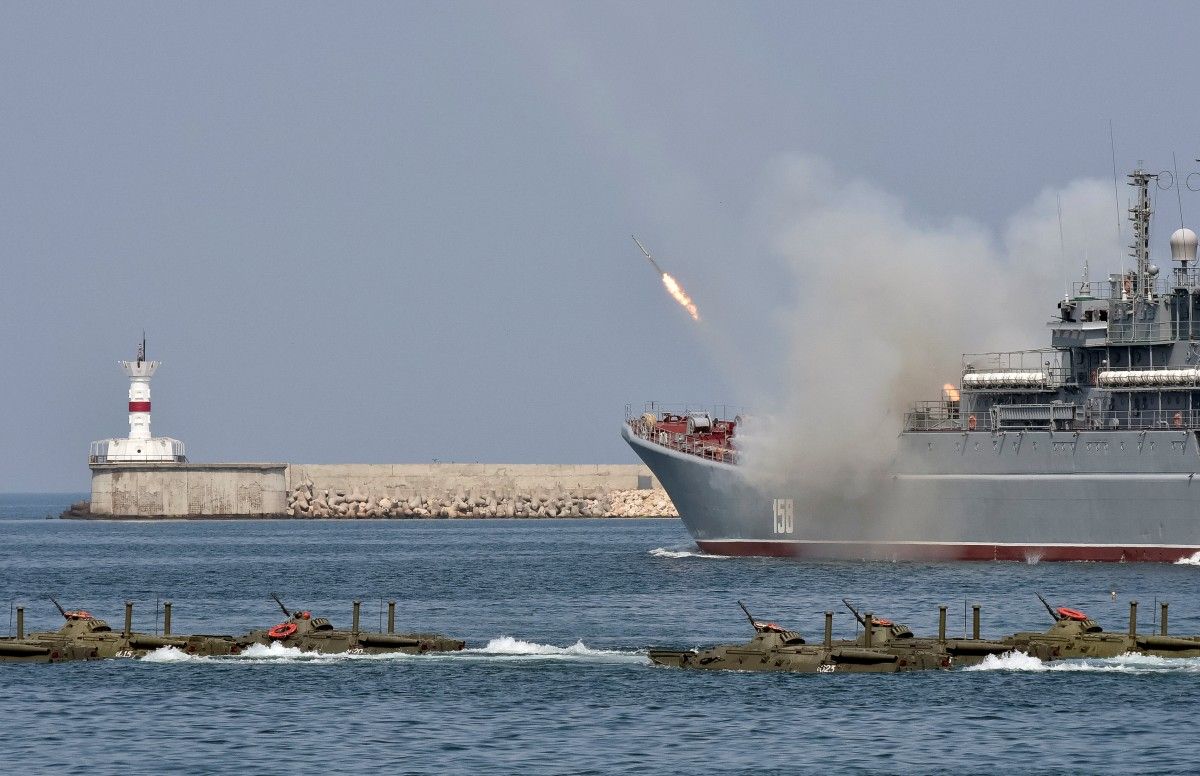In its confrontation with the West, Russia has proved that it has much more opportunities to bluff and exert pressure. This allows the Kremlin to actively intimidate Western countries claiming that Russia could create conflict anywhere or inflict significant damage to anyone. It is being done in a show-off manner, using third countries as a training ground, such as in Syria. It is in this very context that we should perceive an earlier statement on Russian naval activity by U.S. Navy Admiral Michelle Howard, who heads NATO's Allied Joint Force Command in Naples and commands U.S. naval forces in Europe and Africa.

Definitely, the Kremlin now regards its Navy as a means of underscoring its status of a world power, draw international attention, make itself reckoned with, and hold negotiations on an equal footing. In this sense, Moscow has been making some very serious efforts intended to threaten the West, using, including the annexed Crimean peninsula and the Black Sea Fleet.
Kremlin is absolutely fine with the fact that Crimea will be used as a military base aimed to intimidate the West
First, today we are seeing signs of significant strengthening of Russia’s Black Sea Fleet. Second, the peninsula has in fact been turned into a Russian military base, with no regard to population’s interests. And the Kremlin is absolutely fine with the fact that Crimea will be used as a military base aimed to intimidate the West.
Moreover, Russia has all opportunities for the rapid deployment of tactical nuclear weapons on the peninsula. We also know that the Black Sea Fleet has its Su-24M bombers capable of carrying nuclear warheads. And ships can directly use the missiles with nuclear warheads. This is definitely a huge threat to the world, and that is what the Kremlin uses as an argument, to make the international community count with Russia.
Mykolayiv-based Zorya-Mashproekt design bureau used to supply gas turbines for large warships, but now this cooperation is blocked
However, despite all this, the Russian Navy has lost a lot. In particular, strategically, it is much inferior to the U.S. Navy. First, Russia is now incapable of building large vessels. To some extent, in this sense it is dependent on Ukraine, because it was Mykolayiv-based Zorya-Mashproekt design bureau which used to supply gas turbines for large warships, but this cooperation is now blocked. Russia currently has only a single aircraft carrier, and experts say, it is in dire need of modernization and repair. Of the four nuclear-powered missile cruisers, only one is currently in service. And Russia can’t build any more of them, so it chooses to manufacture submarines, corvettes, and frigates.
Second, the actual surface naval forces of Russia are capable of operating only in the coastal waters of the seas (the experts define such tasks as tactical). As we remember, in October 2015, cruise missiles were launched from Russian warships located in the Caspian Sea. In fact, using such cruise missile carriers from afar is Russia’s only way to engage. At the same time, it is almost impossible for the Russian Navy to achieve strategic objectives.
As for the potential threats to Ukraine from Russia’s Black Sea Fleet stationed in the occupied Crimea, it could be used against Ukraine to carry out landings or missile strikes from the sea (provided that the Kremlin takes a decision on launching a large-scale invasion or a full-blown noncontact war against Ukraine). Formally, Russia has such opportunities, but the latest actions by both the Kremlin and Vladimir Putin personally suggest that Moscow’s strategy is now different. It has evolved, now containing among priority plans no major war against or using Ukraine as a huge training range to demonstrate their weapons to the West. To this end, Russia has chosen another location, which is Syria. But this does not mean that other activities can’t be carried out, such as sabotage, operations such as landings of subversive groups or larger-scale assault groups.
Valentyn Badrak is a director of the Center for Army, Conversion and Disarmament


